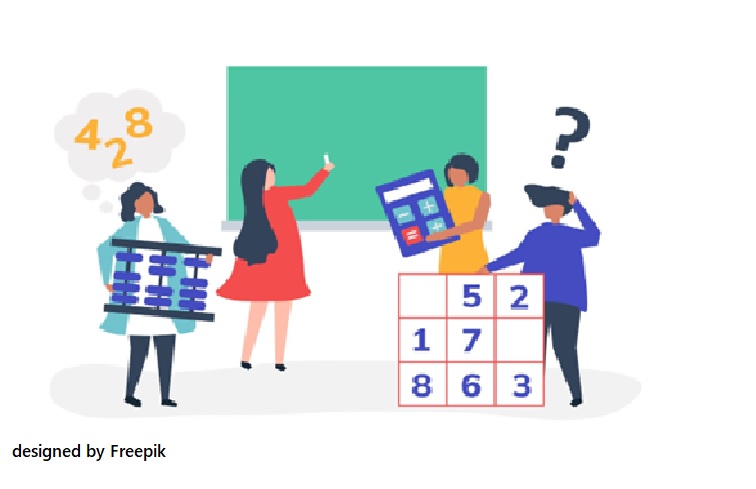10 Ways Technology Boosts Math Skills
Mathematics has always been one of the most challenging subjects for students, especially those who struggle with numbers. However, technology has made it easier for students to learn and understand math concepts.
In the United States, many students are using technology to improve their math skills, and the results have been impressive. In this blog post, we will explore Ten ways technology can help students improve their math skills.
1. Math Apps and Games

There are many math apps and games available that students can use to improve their math skills. These apps and games are designed to make learning math fun and engaging. For instance, the popular app "Khan Academy" provides thousands of free video lessons, practice exercises, and quizzes on various math topics, ranging from basic arithmetic to calculus.
The app also provides instant feedback and progress tracking, making it easy for students to monitor their progress.
In addition, math games such as "Math Blaster" and "Prodigy" can also help students improve their math skills. These games use fun graphics, sound effects, and game mechanics to make learning math more entertaining.
A study by the National Education Association found that students who use educational games score higher on math tests than those who do not use games.
2. Virtual Manipulatives
Virtual manipulatives are digital representations of physical objects that can be manipulated on a computer or tablet. These manipulatives can help students understand math concepts by allowing them to visualize and interact with math objects. For instance, students can use virtual manipulatives to explore fractions, decimals, and geometric shapes.
Research has shown that the use of virtual manipulatives in math instruction can lead to improved problem-solving skills, deeper understanding of math concepts, and increased student engagement.
According to a study by the National Council of Teachers of Mathematics, students who used virtual manipulatives scored higher on math tests than those who did not use manipulatives.
3. Online Tutoring and Courses
Designed by Freepik
Online tutoring and courses are becoming increasingly popular among students who need extra help with math. Online tutoring allows students to connect with a math tutor from anywhere in the world and receive one-on-one instruction. Many online tutoring services also offer instant messaging and video chat, making it easy for students to get help when they need it.
Online courses, such as those offered by Coursera and edX, provide students with access to high-quality math instruction from top universities around the world. These courses are often self-paced and allow students to learn at their own pace. A study by the Babson Survey Research Group found that over 6 million students in the United States are currently taking at least one online course.
4. Math Software & Tools
Math software programs, such as "Bytelearn" can help students solve complex math problems and equations. These software programs provide tools for graphing, calculating, and manipulating math formulas. They also often include step-by-step guides to solving math problems, making it easier for students to understand the process.
Bytelearn is an interactive AI math tool that helps teachers create assignments, assign them to students, and track their progress. This tool is designed to enhance the teaching and learning experience by providing personalized feedback and recommendations based on each student's individual needs.
5. Math Worksheets
Math worksheets are a traditional tool that teachers use to help students practice math skills. However, technology has made it easier for teachers to create and distribute worksheets. Websites like Bytelearn and Math-Aids offer free math worksheets that teachers can use in their lessons.
6. Interactive whiteboards
Image by zinkevych on Freepik
Interactive whiteboards are large touch-sensitive screens that can display digital content, such as math problems and equations. These whiteboards allow teachers to present math concepts in a visual and interactive way, making it easier for students to understand.
Students can also interact with the whiteboard using their fingers or a stylus, making learning math more engaging.
Research has shown that the use of interactive whiteboards in math instruction can lead to improved student engagement, increased collaboration, and deeper understanding of math concepts. A study by the National Center for Education
7. Math competitions
Participating in math competitions can be a fun and engaging way for students to improve their math skills. There are several free math competitions available online, such as the Math Olympiad, Math Kangaroo, and Math League.
8. Math podcasts

There are several math podcasts available for free that provide interesting and engaging math-related content. Some popular math podcasts include Math Mutation, Math Dude, and The Numberphile Podcast.
9. Online math communities
There are several online math communities where students can connect with other math enthusiasts and discuss math concepts. These communities provide a platform for students to ask questions, share ideas, and collaborate with other students. Some popular math communities include Math Stack Exchange, MathOverflow, and Mathforum.
10. Math simulations
Image by Lifestylememory on Freepik
Math simulations are interactive digital models that allow students to explore complex math concepts visually. These simulations can help students develop a deeper understanding of math concepts by allowing them to manipulate variables and see the effects of their changes. Some popular math simulation websites include PhET and Wolfram Demonstrations.
Take Away
Technology has revolutionized the way students learn and understand math. With the help of math apps and games, virtual manipulatives, online tutoring and courses, math software, and interactive whiteboards, students can improve their math skills and achieve better academic success.
As technology continues to advance, it is important for educators and parents to embrace these tools and incorporate them into math instruction. With the right combination of technology and traditional teaching methods, students can develop a love for math and excel in this critical subject.
About the Author
Hey! I am John Maloney Ex middle school math teacher and currently working with Bytelearn. The AI tool Bytelearn provides step by step help to the teachers and students. It also helps in flagging knowledge gaps in students. There are plenty of Free resources ranging from 6th, 7th and 8th Grade Math Worksheets, Quizzes, Practice Problems, Lesson Plans and Unit Tests.
Search Internet4Classrooms










